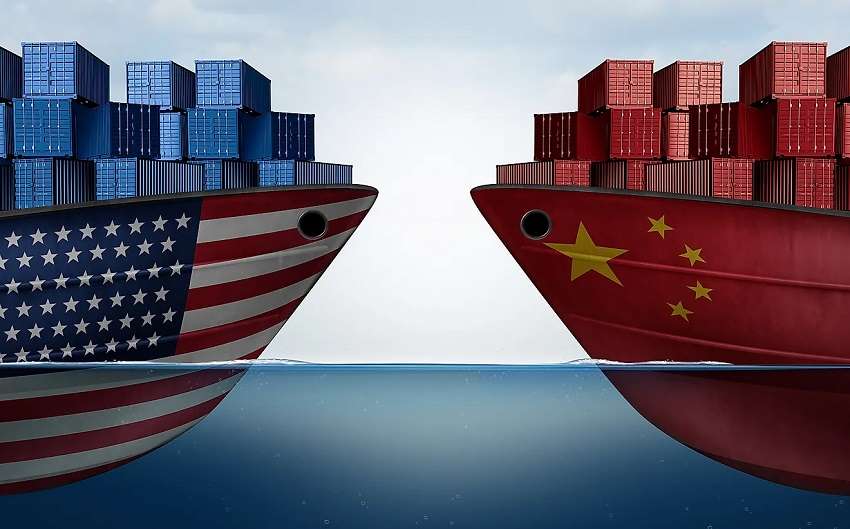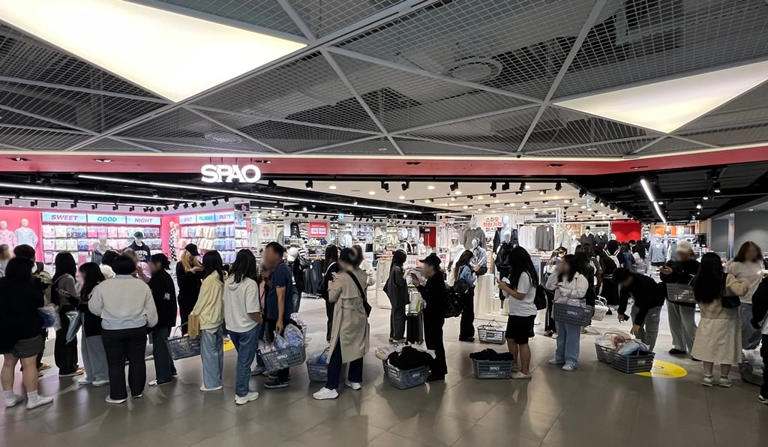FW
Poised for continued growth, the Middle East market for high-tenacity polyester filament yarn is anticipated to grow at compound annual growth rate (CAGR) of +1.2 per cent in value and +1.1 per cent in volume from 2024-35. The market is projected to reach 56,000 tons and $137 million by the end of this period.
This growth is primarily being driven by an increasing demand for high-tenacity polyester filament yarn across the Middle East. While growth is expected to moderate slightly over the next decade, consumption is still forecast to rise steadily. In 2024, however, consumption declined by 15.7 per cent to 50,000 tons, marking the second consecutive year of decline after a period of growth. Despite this recent dip, overall consumption has shown resilience, peaking at 63,000 tons in 2022.
The value of the high-tenacity filament polyester yarn market in the Middle East also declined by -15.2 per cent to $119 million in 2024. This figure represents the total revenue of producers and importers at nominal wholesale prices. Similar to volume, the market value had previously shown strong expansion, reaching a peak of $155 million in 2022.
Turkey emerged as the largest consumer in 2024, accounting for approximately 69 per cent of the total volume with 35,000 tons. The United Arab Emirates (UAE) followed with 7,700 tons, and Saudi Arabia with 3,600 tons. Notably, consumption across the UAE and Saudi Arabia grew at an average annual consumption growth rates of +25.3 per cent and +9.7 per cent respectively, between 2013-24.
In terms of value, Turkey also led the market at $90 million, followed by the UAE at $14 million and Iran. The value of the high-tenacity filament polyester yarn in the UAE exhibited the most substantial average annual market growth of +22.2 per cent during the same period. The UAE also recorded the highest per capita consumption in 2024 at 756 kg per 1,000 people, followed by Turkey (400 kg) and Saudi Arabia (98 kg).
After three years of growth, production of high-tenacity filament polyester yarn in the Middle East declined by -44.5 per cent in 2024 to 37 tons. Lebanon remained the largest producer, accounting for almost all of the total volume. Imports also decreased by -14.7 per cent in 2024 to 51,000 tons, with Turkey being the largest importer.
The import price saw a significant increase of 29 per cent in 2024, reaching $2,079 per ton. Exports, primarily from the UAE and Turkey, increased by 39 per cent in volume in 2024, while the export price declined sharply by -40.6 per cent to $2,176 per ton.
In the recently concluded FY2024-25, India registered a 6.32 per cent rise in textile and apparel (T&A) exports to $36.606 billion.
A significant contributor to this growth were apparel exports which rose by 10.03 per cent to $15.989 billion, while textile exports grew by 3.61 per cent to $20.617 billion. However, in March 2025, combined T&A exports experienced a moderate growth to $3.387 billion. During the month, apparel shipments increased by 3.97 per cent while textile exports declined by 5.81 per cent.
Looking at the annual figures, India’s apparel exports expanded from $14.532 billion in FY24 to $15.989 billion in FY25. On the other hand, textile exports rose from $19.899 billion to $20.617 billion during the same period. Apparel exports in March 2025 increased by 3.97 per cent to $1.531 billion, , while textile exports fell to $1.856 billion, a 5.81 percent drop.
Within the textile sector, exports of cotton yarn, fabrics, made-ups, and handloom products registered a modest growth of 3.19 per cent to $12.056 billion in FY25. Exports of man-mafde yarn, fabrics, and made-ups rose by 4.07 per cent to $4.869 billion, while carpet exports experienced a significant growth of 10.46 per cent, reaching $1,541.97 million. In March 2025, exports of cotton yarn, fabrics, made-ups, and handloom products grew by 2.16 per cent to $1,118 million, while exports of man-made yarn, fabrics, and made-ups declined by 0.85 per cent to $436 million. However, carpet exports increased by 6.52 per cent to $137 million.
Imports of raw cotton and waste expanded by 103.67 per cent to $1,219 million during FY25, compared to $599 million in the previous fiscal year. Imports of textile yarn, fabrics, and made-ups also rose by 8.69 per cent, from $2,278 million to $2,476 million. In March 2025, imports of raw cotton and waste jumped by 61.97 per cent to $79 million, while imports of textile yarn, fabrics, and made-ups increased by 19.98 per cent to $193 million.
In FY24, India’s textile and apparel exports totaled $34.430 billion, a 3.24 per cent decrease from FY23. Apparel exports declined by 10.25 per cent to $14.532 billion, while textile exports increased by 2.62 per cent to $19.898 billion. Imports in FY24 showed a significant decline in raw cotton and waste (down 58.39 per cent) and textile yarn, fabrics, and made-ups (down 12.98 percent) compared to FY23.
Despite a general slowdown in the luxury market, French luxury powerhouse Hermès International registered a 7 per cent increase in sales to €4.13 billion at consistent exchange rates in Q1, FY25.
While these figures slightly missed analysts' predictions of an 8 per cent rise in sales to €4.2 billion, Hermès outperformed its French luxury rivals like LVMH Moët Hennessy Louis Vuitton, which reported a 2 per cent decline in sales. However, this growth rate represents a deceleration from Q4, FY24 where Hermès had registered an 18 per cent rise in sales.
Axel Dumas, Chief Executive Officer, Hermès states, the group achieved a solid growth in sales despite a high comparison basis in the quarter. He attributed this growth to the company's vertically integrated model.
In a research report, Luca Soca, Analyst, Bernstein notes, these results confirm a slower consumer demand environment.
The brand’s sales in the United States grew by 11 per cent while sales in Europe, excluding France, increased by 13 per cent. Sales in the Middle East rose by 14 per cent sales at constant currency, while Japan experienced a substantial 17 per cent jump, driven by local clientele.
Sales in the rest of Asia, however, increased by only 1 per cent due to ongoing softness in the Chinese market.
Boosted by new designs of bags like Medor and Mousequeton, sales of the retailer’s leather goods division increased by 10 per cent at constant currency rates. Sales of ready-to-wear grew by 7 per cent for the quarter.
Silk and textiles, including the brand's iconic scarves, experienced a 5 per cent rise in sales while sales in the fragrance and beauty segments remained flat.
Continuing its expansion strategy, Hermes plans to open three new production facilities in France over the next three years.
Taking currency fluctuations into account, the company’s sales increased by 9 per cent, boosting its revenue by €49 million.
Looking ahead, the company aims to grow revenues at constant exchange rates in the medium-term, despite the economic, geopolitical and monetary uncertainties around the world.It aims to leverage its highly integrated artisanal model, the balanced distribution network, the creativity of collections and the loyalty of clients.

China has consolidated its position as a powerhouse in the global sportswear market, driven by a growing middle class, increasing health consciousness, and government initiatives. The global sportswear market, valued at approximately $400 billion in 2023, is projected to reach over $600 billion by 2030, at a CAGR of around 5 to 6 per cent. Given this scenario, China is a crucial growth driver, with its market size reaching approximately 1.4 trillion yen (around $200 billion) in 2023. Global leaders like Nike and Adidas have long held significant market share, but domestic brands like Anta and Bosideng are rapidly closing the gap, leveraging unique strategies and deep market understanding.
China's domestic sportswear market dynamics
Despite global economic uncertainties, China's apparel sector, particularly sportswear, has shown remarkable resilience. The 2025 IMD China Company Transformation Indicator (CCTI) rankings highlight key success factors as: business robustness (BR), early innovation results (EI), and R&D efforts (RD).
In 2023, total retail sales of China's garments, footwear, hats, and textiles sector grew by 12.9 per cent year-on-year, reaching yen 1.4 trillion. Sportswear and athleisure segments led this growth with rising health consciousness and government initiatives like the Outdoor Sports Industry Development Plan (2022-2025).
However, 2024 witnessed a slowdown due to global economic challenges, geopolitical tensions, and domestic restructuring, impacting the mass market significantly. Then the Chinese government gave stimulus in late 2024 aimed to revitalize growth, with early signs of recovery emerging in 2025.
What has helped it revival is the rising consumer confidence and evolving lifestyle trends; increasing health consciousness and participation in sports; supportive government policies promoting the sports industry; growing demand for athleisure and performance apparel.
Domestic champions rise
Now, Chinese sportswear brands are rapidly gaining market share with their innovations, diversification, and strong digital engagement. For example, domestic brand Anta Sports gained due to its multi-brand strategy and R&D prowess. Anta secured the second spot in the 2025 CCTI rankings, revealing its dominance through a multi-brand strategy, including Fila, Descente, and Kolon Sport. In 2023, Anta 's revenue grew 16.2 per cent to yen 62.4 billion, with significant contributions from the Anta and FilaA brands. The company's strong R&D investments of almost yen 1.61 billion in 2023, have resulted in advancements in high-performance footwear, smart sportswear, and eco-friendly materials, with over 2,300 patents.
Table: ANTA revenue and growth
|
Year/Period |
Revenue (RMB bn) |
Growth (%) |
|
2023 |
62.4 |
16.2 |
|
H1 2024 |
33.735 |
13.8 |
Similarly Bosideng another domestic brand has transitioned into China's leader in premium down apparel, driven by strong customer engagement and a direct-to-consumer model. In 2023-24, revenue increase to yen 23.2 billion, with net profit rising to yen 3.1 billion. The company's R&D efforts, with over 1,193 patents, focus on thermal insulation, lightweight materials, and innovative construction techniques have given it a huge boost.
Global brands adapt
Meanwhile, global brands are navigating the Chinese market with varying degrees of success. Lululemon Athletica saw significant growth in China, rising to fifth place in the 2025 CCTI rankings. The brand reported 67 per cent growth in China in 2023, contributing to its global revenue of $9.6 billion. Lululemon aims to double revenue to $12.5 billion by 2026, targeting the premium activewear segment. However, it has a low ranking in R&D efforts, which is a major area for potential improvement.
Adidas dropped to eighth place in the 2025 rankings, facing challenges in customer engagement amidst intensifying domestic competition. Now the brand has to recalibrate its strategies to maintain competitiveness in China's dynamic market.
Therefore, China's sportswear market expected to continue growing with domestic brands and evolving consumer demands. Companies that prioritize innovation, deepen local engagement, and embed sustainability into their strategies will thrive in this dynamic landscape. While domestic brands gain ground, they must strengthen their market positioning and differentiation. Simultaneously, evolving consumer demands require companies to strengthen digital engagement, localize production innovation, and consider international expansion. The future belongs to companies that master innovation, deepen local engagement, and embed sustainability into their core strategies.
American sportswear brand Under Armour has expanded its Board of Directors with the appointment of three new members: Dawn Fitzpatrick, Eugene Smith, and Robert Sweeney. Their diverse expertise spans finance, sports leadership, and investment.
Dawn Fitzpatrick brings extensive financial and operational acumen to the board. For the past eight years, she has served as the Chief Executive Officer and Chief Investment Officer, Soros Fund Management, a private investment firm. Prior to joining Soros, she was employed at UBS and its predecessor companies for nearly 25 years. Her most recent role was as the Head – Investments, UBS Asset Management. She also held leadership roles at UBS O'Connor, the firm's hedge fund business.
Currently, Fitzpatrick serves as Non-Executive Director, Barclays plc, and is involved in its Remuneration, Risk, and Sustainability Committees. Additionally, she contributes to the Federal Reserve Bank of Dallas Financial Sector Advisory Council as Chair, Advisory Council of The Bretton Woods Committee, and the Bloomberg New Economy Advisory Board.
Offering a deep understanding of intercollegiate sports management, Eugene Smith recently ended distinguished 19-year tenure as Senior Vice President and Athletic Director, Ohio State University (2005-2024). During his tenure at Ohio State, Smith co-chaired the NCAA's Federal-State Legislative Working Group on name, image, and likeness issues, chaired the 2011 NCAA Men's Basketball Committee, and served on the College Football Playoff Selection Committee.
His involvement with the NCAA also included participation in the Management Council, Committee on Infractions, Executive Committee, Football Rules Committee, and President's Commission Liaison Committee. Smith holds the distinction of being the first Black president of the National Association of Collegiate Directors of Athletics (NACDA) and is Former President- Division I-A Athletics Directors Association. He also served as Athletic Director, Arizona State, Iowa State, and Eastern Michigan universities.
Since 2019, Eugene Smith has been engaged as President, Sycamore Partners, a private equity firm focused on consumer, distribution, and retail-related investments. Before joining Sycamore, Sweeney spent 22 years at Goldman Sachs, ultimately as a Partner and Global Head - Consumer/Retail Investment Banking Group. Notably, he provided advisory support to Under Armour on various matters, including its initial public offering in 2005. Sweeney also served as an officer in the US Navy's Submarine Force from 1989 to 1995.
Mohamed El-Erian, Chair, Under Armour's Board, expressed enthusiasm for the new appointments, stating that their extensive financial and operational expertise, combined with Gene's deep knowledge of intercollegiate sports management, makes them exceptional additions to our board. Their unique talents, insights, and passion for the brand will be invaluable for navigating our next chapter" as the company pursues its growth strategy, he added.
This announcement follows Under Armour's recent upward revision of its annual profit forecast after exceeding quarterly results, driven by reduced discounting and a recovery in demand. In the quarter ending December 31, the brand’s revenue increased to $1.40 billion, surpassing analysts' expectations.
Spinners in the textile industry face several operational and quality-related challenges due to increased humidity, temperature, and low air quality in the work environment. These factors can significantly impact fiber behavior, machinery efficiency, worker health, and overall productivity. Below is a breakdown of the challenges and suggested strategies to mitigate them:
Challenges due to increased temperature
Problems:
- Reduced machine efficiency: Motors and bearings overheat, causing more breakdowns.
- Fiber damage: Excess heat can dry out or alter the natural properties of cotton or synthetic fibers.
- Worker fatigue: Leads to reduced concentration and higher error rates.
Mitigation strategies: To overcome these challenges, spinners need to:
- Install industrial cooling systems (HVAC or spot cooling).
- Use heat-resistant lubricants and components in machinery.
- Shift-based scheduling to avoid peak heat hours and reduce worker fatigue.
- Roof insulation and reflective paints to lower ambient temperature inside mills.
Challenges due to high humidity
Problems:
- Fiber swelling and stickiness: Especially problematic for cotton, leading to inconsistent yarn formation.
- Static electricity issues are reduced, but excessive moisture leads to machine corrosion.
- Doffing and drafting inefficiencies due to sticky fibers.
- Mold/mildew risk in storage areas.
Mitigation strategies: To overcome these challenges, spinners need to
- Maintain optimal relative humidity (RH) at 55 –65 per cent for cotton spinning.
- Install dehumidifiers and climate-controlled zones around sensitive machinery.
- Use hygrometers and automated humidity controllers to monitor real-time conditions.
- Adopt better ventilation systems to balance humidity without drastically altering temperature.
Challenges faced due to poor air quality
Problems:
- Fly and lint accumulation affects machinery performance and yarn quality.
- Respiratory health issues for workers: long-term exposure leads to diseases like byssinosis.
- Dust buildup causes electrical and fire hazards.
Mitigation strategies: To deal with these challenges spinners can
- Install high-efficiency air filtration systems (HEPA filters) in spinning halls alongwith frequent air exchange systems (exhaust fans, blowers).
- Regularly clean ducts and workspaces to prevent fly build-up.
- Acquire personal protective equipment (PPE) like masks for workers.
Cross-cutting strategies
To reduce their operational costs, spinners can implement the below-mentioned strategies
- Install automated environment monitoring systems for temperature, RH, and air quality.
- Upgrade energy-efficient infrastructure to improve airflow and reduce thermal load.
- Organize training sessions for floor staff to identify and report environmental issues quickly.
- Install green walls or indoor plants (where feasible) to improve air quality and reduce indoor heat.
With a new European Union-wide ban on throwing away textiles taking effect this year, Sweden's recycling facilities are overflowing with clothing. Overwhelmed by this incident, local communities are urging major fast-fashion companies to take responsibility.
Though the ban aimed to promote circular waste management by sorting and reusing clothes, or recycling them into materials like padding or insulation, however, Sweden's recycling system can't handle the volume. As a result, most of the used clothing is shipped overseas, mainly to Lithuania, for sorting, recycling, or energy production.
The Swedish Society for the Conservation of Nature reports, Swedes discard 90,000 tons of textiles each year - about 22 pounds per person. According to the European Environment Agency, in EU, this has increased from 37 pounds in 2019 to 42 pounds in 2022.
In Sweden, in charge of textile sorting, many local governments are struggling with the increased amounts they're receiving. Some places in the less populated north are still burning textiles because there aren't any buyers for them.
There's a growing expectation that fast-fashion giants like Zara and H&M will eventually have to help manage the waste they create. Discussions are underway at the European level to determine how these companies will be held accountable.
According to a preliminary agreement reached by EU members in February, clothing companies will be responsible for the end-of-life of the products they sell. This means they'll have to pay for the collection, sorting, reuse, and recycling of those items.
Merging the worlds of sports with everyday style, New York-based lifestyle brand Kith has teamed up with Adidas Football to launch a new collection of apparel, accessories and footwear.
Displaying co-branded logos and reimagined classic designs, the collection comprises a premium leather Stadium Coat adorned with Adidas' iconic stripes and a wraparound belt, and a sophisticated Suit Jacket and Pant crafted from a high-quality wool blend. The collaboration also presents a fresh take on the classic Adidas tracksuit, available in both beige and green with unique knit detailing.
Keith and Adidas add another dimension to their collaboration by partnering with ESPN to create exclusive football jerseys and a Hybrid Trench Coat. The ESPN Jersey is constructed from lightweight polyester and boasts bold color-blocking, italicized Kith Monogram artwork, and triple branding incorporating the logos of Kith, Adidas, and ESPN. Complementing the jersey is the Nappa leather Hybrid Trench Coat, which features striped detailing on the sleeves, a zippered interior, and a vibrant multi-colored satin lining showcasing ESPN branding.
Kith also engaged long-time collaborators Chase and DHL Express to produce additional long-sleeve and short-sleeve jerseys, further expanding the collection's appeal.
The accessory range is comprehensive, offering a wide variety of headwear, scarves, and bags. Caps, bucket hats, and acrylic scarves have been redesigned with unique Kith for Adidas Football branding. Completing the accessory lineup are a stylish leather crossbody bag and a spacious duffle bag, both showcasing the collaborative aesthetic.
The footwear component of the collection features four distinct custom Adidas styles. These include the iconic Predator Mania, embellished with Kith Monogram artwork, a tonal Predator 2002 IC indoor cleat, the leather Koresco National offered in three exclusive colorways, and the sleek Predator Megaride lifestyle sneaker.
The launch of this collection is accompanied by a campaign featuring Brazilian football legend Kaká, a World Cup champion and Ballon d'Or winner. Shot in Kaká's native Brazil, the campaign adds an authentic and global feel to the collaboration between Kith and Adidas Football.
Bangladesh is strengthening its position as a key player in the global fashion supply chain as the retail sector recovers. Major international brands are increasingly sourcing from the nation, attracted by its stability, commitment to sustainability, and cost-effectiveness. In FY 2023-24, Bangladesh's RMG exports exceeded $45 billion, fueled by consistent repeat orders and long-term agreements with giants like H&M, Zara, Uniqlo, Primark, and Walmart.
A recent McKinsey report highlights, buyers are shifting more orders to Bangladesh due to its reliability, competitive pricing, and improved ethical and environmental compliance. Unlike some competitors facing economic or political instability, Bangladesh has maintained a steady flow of orders through a combination of cost-efficiency, large-scale production, and a growing focus on sustainability.
The pressure on fashion retailers to source ethically and reduce their environmental impact is driving this trend. Bangladesh offers a compelling solution with over 200 LEED-certified green factories and adherence to international labor standards. Facilities like Viyellatex and DBL Group are exceeding compliance expectations, providing transparency, traceability, and strong Environmental, Social, and Governance (ESG) alignment, crucial for brands meeting regulations like the EU’s Green Deal.
Bangladesh's manufacturing capabilities are also expanding beyond basic garments to include higher-value items such as outerwear, activewear, lingerie, and technical apparel. The development of design support and sampling centers facilitates co-creation with brands, reducing lead times and boosting buyer confidence.
With a skilled workforce, competitive wages, and integrated supply chains, Bangladesh ensures timely and budget-friendly delivery. Ongoing improvements in logistics, including efforts to ease congestion at the Chittagong port, further enhance its appeal. Retailers also benefit from the ability to place low minimum order quantities (MOQs), supporting fast fashion cycles.
The Bangladesh RMG sector is actively investing in innovation, sustainability, and worker welfare, incorporating digital production tools, AI for quality control, and 3D design systems. Buyers are increasingly involved in factory-level training and audits to strengthen partnerships.
Organizations like the BGMEA have launched initiatives like ‘Brand Bangladesh’ to enhance global visibility and trust. The growing alignment between fashion retail demands and Bangladesh's RMG capabilities signifies a new era defined by quality, ethics, and agility.
The proposed restructuring plan by fast-fashion retailer Forever 21 has left its suppliers and other unsecured creditors with significant losses. These creditors are being ‘getting smoked’ with the prospect of minimal repayment on the debts owed to them, stated attorney Justin Alberto at a recent virtual court hearing in Delaware.
Representing a committee of unsecured creditors that includes manufacturers and suppliers based in the US and China, Alberto mentioned, the committee is actively investigating a January deal where retailer JCPenney acquired Forever 21's parent company, Sparc Group.
In a court document filed earlier, the unsecured creditors' committee argued, this acquisition essentially obligated Forever 21 and its related entities to cover JCPenney's existing debt. In their April 10 filing, the committee expressed grave concerns, stating the outcome of these cases is dire for unsecured creditors and that the viability of certain of Forever 21'slargest vendors and the livelihoods of their employees dependent on it.
This March, Forever 21's US operating company filed for bankruptcy for the second time in six years, reporting approximately $1.6 billion in debt. The company's proposed plan to liquidate operations and exit bankruptcy would only repay unsecured creditors, such as suppliers and vendors, a mere 3 per cent to 6 per cent of their $433 million in claims, as indicated in court filings. Entities operating Forever 21 stores outside of the U.S. are not part of this bankruptcy proceeding.
Forever 21 attributed its financial difficulties to declining foot traffic in shopping malls and increasing online competition within the fast-fashion industry. The company also claimed that it faced a competitive disadvantage due to the ‘de minimis’ exemption, which allowed foreign competitors like Shein to import low-value packages from China without paying customs duties.
However, a recent executive order by US President Donald Trump has eliminated this exemption for goods from China and Hong Kong, effective May 2nd.
A member of the Sparc Group and the owner of Forever 21's intellectual property, Authentic Brands Group indicates, it might re-license the brand's IP. This could potentially keep the Forever 21 brand alive in the US in some form despite the bankruptcy of its operating company.












